It seems only two minutes since the RX100 VI arrived but I checked and the now-old model has been in my bag for a full twelve months. Must be time for a new one. Indeed, right on cue comes Henry VII, no doubt to be followed in a further twelve months by Henry VIII. We should get at least six more worthwhile improvements for that one.
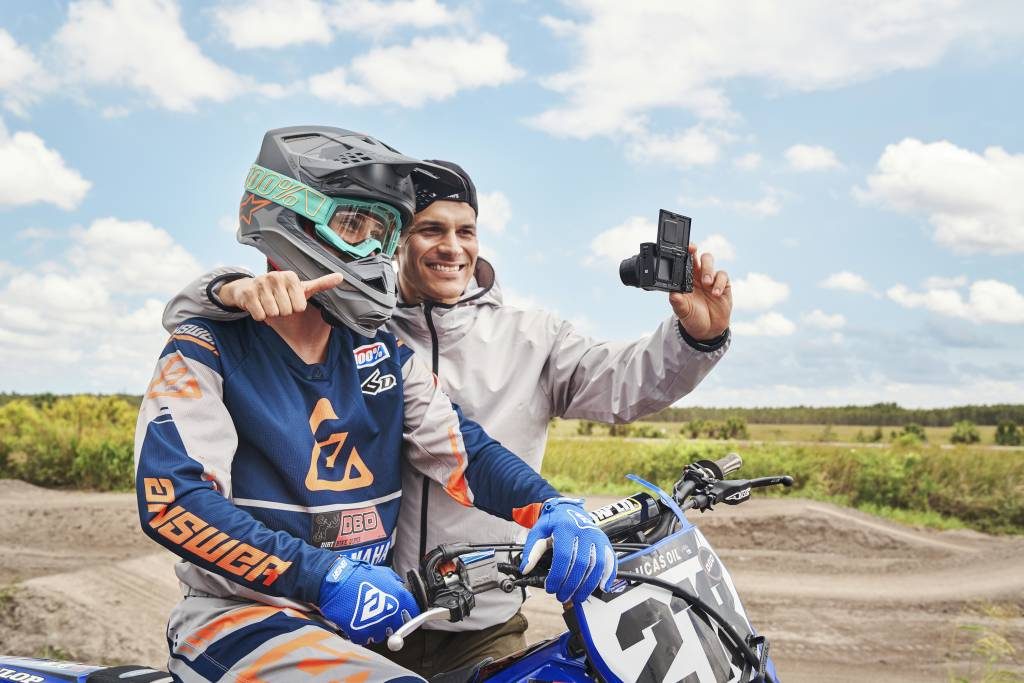
Seriously, I have been delighted with my RX100 VI and I’m glad I went for the longer 24-200mm-equivalent zoom over the faster but shorter lens of the RX V. As pocket zoom camera the RX100 is a natural choice. Nothing else is as capable while being so compact. And, if I may commit heresy, it’s the camera I tend to pick up in preference to the Leica D-Lux 7. Excellent though it is, the D-Lux 7 is not the sort of camera you can just slip in a jacket pocket and forget about it.
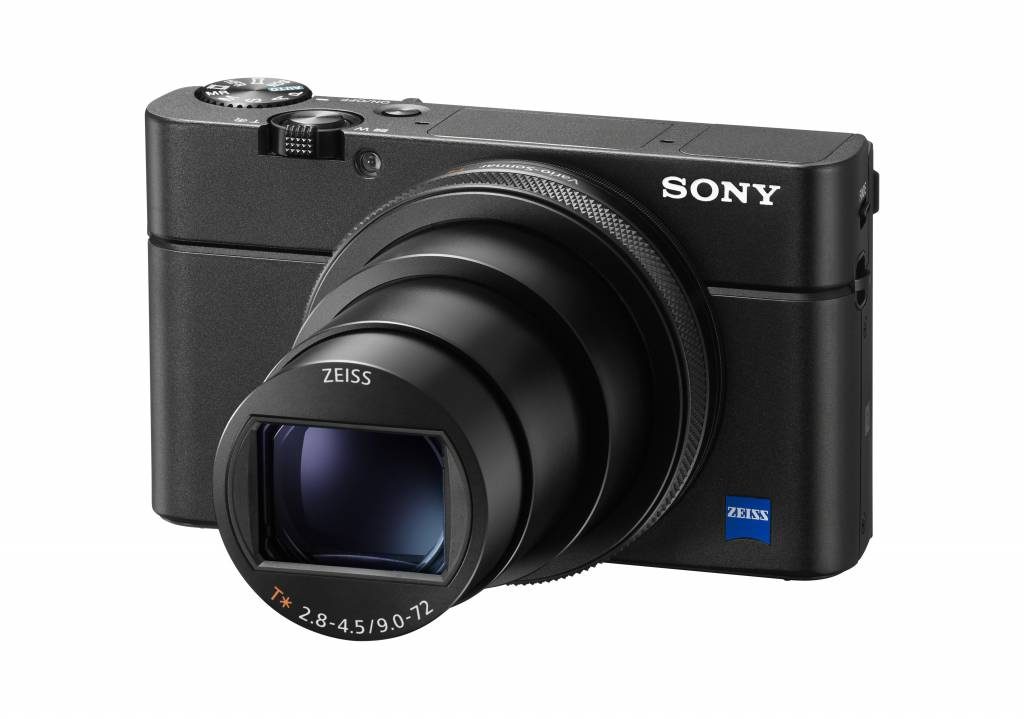
As the owner of good old Henry VI, I’m not rushing to swap it out for the first of the Tudors, but this new higher-performance marvel seems worth a shot if you are putting your toe into the water for the first time. With its all-new sensor and Alpha 9 speed – claimed to be the fastest autofocus ever seen on a 1in sensor – this is the one to beat.
Here’s the full low-down from the horse’s mouth….
PRESS RELEASE
Sony Brings New Level of Power to Premium Compact Camera Line-up with THE introduction of the RX100 VII
Alpha 9 performance in your pocket
- Newly developed 1.0-type stacked 20.1 MP[i] Exmor RS™ CMOS image sensor with DRAM chip and latest generation BIONZ X™image processor
- Alpha 9-level speed performance with up to 60 AF/AE tracking calculations per second[ii] and 20fps[iii]blackout-free shooting[iv] with AF/AE tracking
- World leading[v] 357-point focal-plane phase-detection AF + 425-point contrast-detection AF with world’s fastestv 0.02 sec[vi] high AF speed
- Real-time Tracking and Real-time Eye AF for humans and animals[vii]
- ZEISS® Vario-Sonnar T* 24-200mm[viii] F2.8 – F4.5 Large Aperture High Magnification Zoom Lens
- New ‘Single Burst Shooting’[ix] Drive Mode at up to 90fps[x] speed
- Pro-level movie functionality including 4K[xi] HDR (HLG)[xii] , Real-time Tracking and Real-time Eye AF for movie shooting, 4K Active SteadyShot™,Vertical-position data recording for movies and integrated microphone jack
Sony today announced a new addition to its award-winning series of RX cameras with the launch of the RX100 VII (model DSC-RX100M7). Utilising technologies developed for Sony’s full-frame mirrorless camera Alpha 9, the RX100 VII achieves new levels of performance in a compact camera, in both stills and movie shooting, inspiring the user to feel confident that they are armed with professional-level power in their pocket for spontaneous shooting in everyday life.
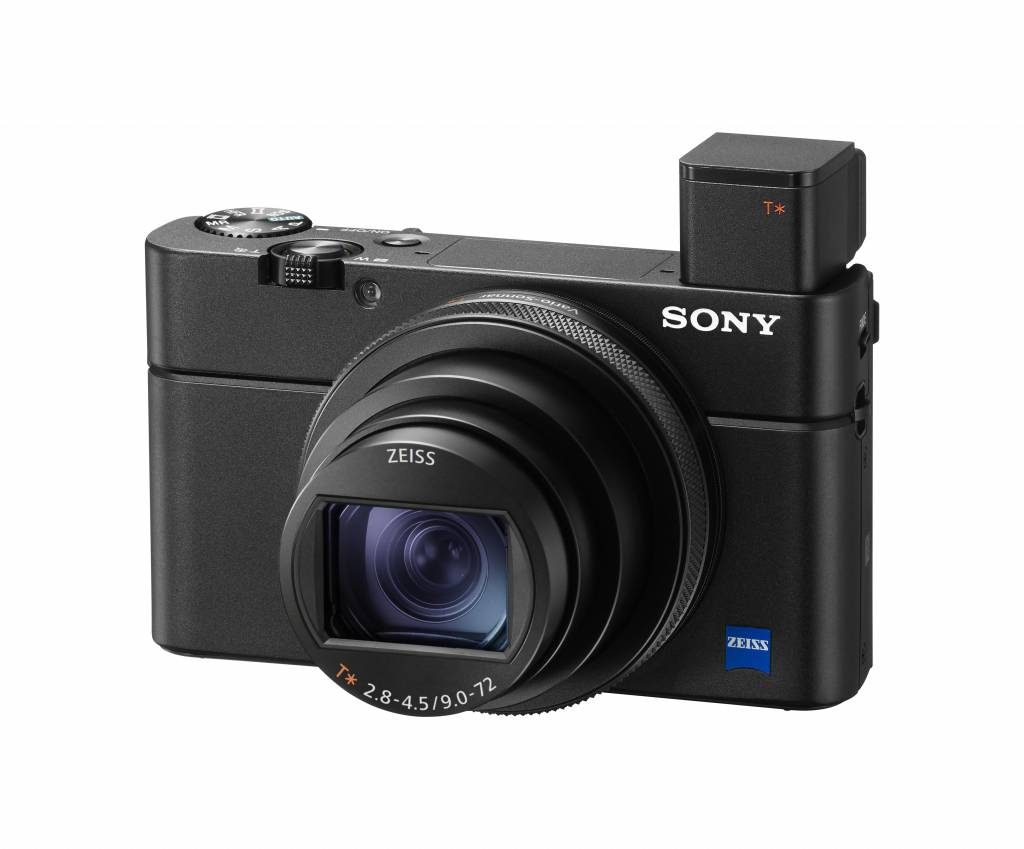
The RX100 VII is powered by a newly developed 1.0-type stacked Exmor RS CMOS image sensor and the latest
New Standard for AF Performance in a Compact Camera
The RX100 VII offers a world leadingv 357 focal-plane phase-detection AF points and 425 contrast-detection AF points. In addition, thanks to a newly optimised lens drive control, world’s fastestv 0.02 secviAF acquisition time is realised. A major leap in AF/AE tracking performance during continuous shooting[xiii] means the camera performs AF/AE calculations up to 60 times per secondii and captures fast moving action at 20fpsiii with AF/AE tracking, ensuring that each moment is shot with swift and accurate focus.
In addition, the image sensor realises blackout-free shootingiv for a completely live view, even when continuous shooting at 20fpsiii; the same experience as the Alpha 9.The RX100 VII also debuts a new drive mode, Single Burst Shootingix, for capturing the perfect high-speed shot at up to 90fpsx in JPEG/RAW format utilising the anti-distortion shutter. ‘Single Burst Shooting’ix allows the photographer to frame fast moving action and shoot as if taking a single shot but the camera will actually deliver 7 still images, taken at 90fps, 60fps or 30fps, so the user can select the perfect moment.
For the first time in a compact camera, the RX100 VII introduces advanced ‘Real-time Tracking’ and ‘Real-time Eye AF’ capabilities. ‘Real-time Tracking’ utilises Sony’s latest algorithm including artificial intelligence-based object recognition to ensure that subjects can be captured with excellent accuracy, even via the touch panel on the rear screen. ‘Real-time Eye AF’, the latest version of Sony’s acclaimed Eye AF technology, employs AI-based object recognition to detect and process eye data in real time, resulting in improved accuracy, speed and tracking performance of Eye AF for both humans and animalsvii, and allows the photographer to concentrate exclusively on composition[xiv].
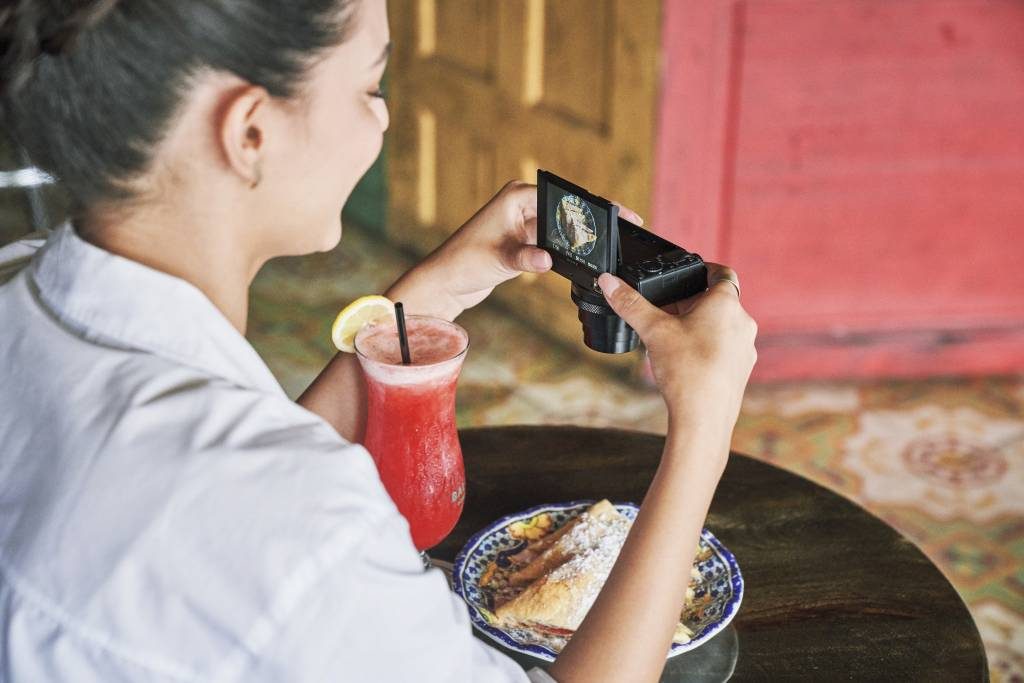
Movie-Making Marvel
The compact and lightweight characteristics of the RX100 VII (approx. 302g / 102mm x 58mm x 43mm[xv]) mean it can always be carried around and can be mounted in places that larger cameras cannot. But its small factor belies a multitude of pro-level movie-making capabilities perfect for on-the-go shooting such as vlogging:
- 4K in-body movie recording with full pixel readout and no pixel binning in high bit rate XAVCS™xi
- Real-time Tracking and Real-time Eye AF for video
- 4K Active SteadyShot that is 8x more effective than 4K Standard SteadyShot[xvi]
- Integrated Microphone input[xvii]
- Hybrid Log-Gamma (HDR) / S-Gamut3.Cine / S-Log3, S-Gamut3/S-Log3
- Compatibility with ‘Movie Edit add-on’ from the ‘Imaging EdgeTM’ mobile application for movie stabilisation and editing
- Vertical-position data recording for movies[xviii]
- Interval Shooting[xix] for stunning time-lapse videos
- Super Slow Motion[xx] recording at up to 1000fps
- 180-degree flip screen for ease-of use whilst vlogging
“The RX100 VII sets new standards for both photography and videography in a compact camera and we are confident that its phenomenal speed and AF capabilities will be very well received by customers,” said Yann Salmon Legagneur, Director of Product Marketing, Digital Imaging, Sony Europe. “Users will feel the reassurance that that they have the power of an Alpha 9 in their pocket, in compact form, so they can trust this camera in any given situation.”
Shooting Grip Kit for Vloggers
A simple vlogging setup with an external microphone is made possible with the Shooting Grip Kit(DSC-RX100M7G). The kit includes an RX100 VII, Shooting Grip (VCT-SGR1) which allows for easy recording and zooming right at your fingertips, Bracket with Accessory Shoe to attach the Microphone, and two Rechargeable Battery Packs(NP-BX1)[xxi].
New Jacket Case for the RX100 Series
Sony has also introduced a new leather-look body case for the RX100 series(LCJ-RXK) which includes a lens jacket and shoulder strap to protect the camera from bumps and shocks. It provides easy access to the microphone jack and USB terminal which enables charging and image transfers without the need to remove the case. Available in Black or Beige.
Pricing and Availability
The RX100 VII and LCJ-RXK will ship in Europe in August 2019 priced at approximately €1,300 and £1,200 and €85 respectively.
For full product details, please visit:
RX100 VII: https://www.sony.co.uk/electronics/cyber-shot-compact-cameras/dsc-rx100m7
LCJ-RXK: https://www.sony.co.uk/electronics/cyber-shot-compact-cameras-cases-covers-straps/lcj-rxk
A product video on the new RX100 VII can be viewed here.
A variety of exclusive stories, videos and exciting new content shot with the newest cameras and other Sony α products can be found at
https://www.sony.co.uk/alphauniverse. Sony’s European photography hub is available in 22 languages and details product news, competitions and an up-to-date list of Sony events in each country.
About Sony Corporation
Sony Corporation is a creative entertainment company with a solid foundation of technology. From game and network services to music, pictures, electronics, semiconductors and financial services – Sony’s purpose is to fill the world with emotion through the power of creativity and technology. For more information, visit: http://www.sony.net/
[i] Approximate effective megapixels
[ii] When using the electronic shutter; effective when the shutter speed is 1/60 or above
[iii] When using the electronic shutter with “Continuous shooting mode: Hi”. Effective when the shutter speed is 1/60 or above
[iv]Effective when using electronic shutter. The slower the shutter speed, the lower the refresh rate of the screen
[v] Among fixed-lens digital still cameras with 1.0-type sensor. As of July 2019, based on Sony research
[vi] CIPA standard, internal measurement, at f=9.0mm (wide-end), EV6.6, Program Auto, Focus mode: AF-A, Focus area: Centre
[vii] Real-time Eye AF for Animals supports still images only, and cannot be used in combination with tracking. Does not work with some types of animal. Focusing may not perform well depending on scene and subject conditions
[viii] Angle of view (35mm format equivalent)
[ix] Seven still images are shot per burst. Focus and exposure are fixed at the first shot
[x] When Drive Mode is set to “Single Burst Shooting: Hi”
[xi]3840×2160 pixels. A Class 10 or higher SDHC/SDXC memory card is required to record movies in the XAVC S format. UHS-I (U3) SDHC/SDXC card is required for 100Mbps. When “Auto Power Off Temperature” is set to “Standard”, continuous shooting is possible for about 5 minutes
[xii] Connect this product to an HDR (HLG) compatible Sony TV via a USB cable to display HDR (HLG) movies
[xiii] Compared to RX100 VI
[xiv] Both right eye and left eye are selectable, either via the menu or by the touchscreen panel
[xv]Width x Height x Depth
[xvi] Image compensation angle at wide-end (Comparison with 4K standard mode)
[xvii] Attaching a mic without the Shooting Grip Kit requires an optional accessory
[xviii] In-camera movie playback is in the horizontal position. Whether or not movies are displayed in the vertical position depends on your device
[xix] Wi-Fi does not work during interval shooting
[xx] Audio recording is not available. A Class 10 or higher SDHC/SDXC memory card is required
[xxi]One included with RX100 VII body

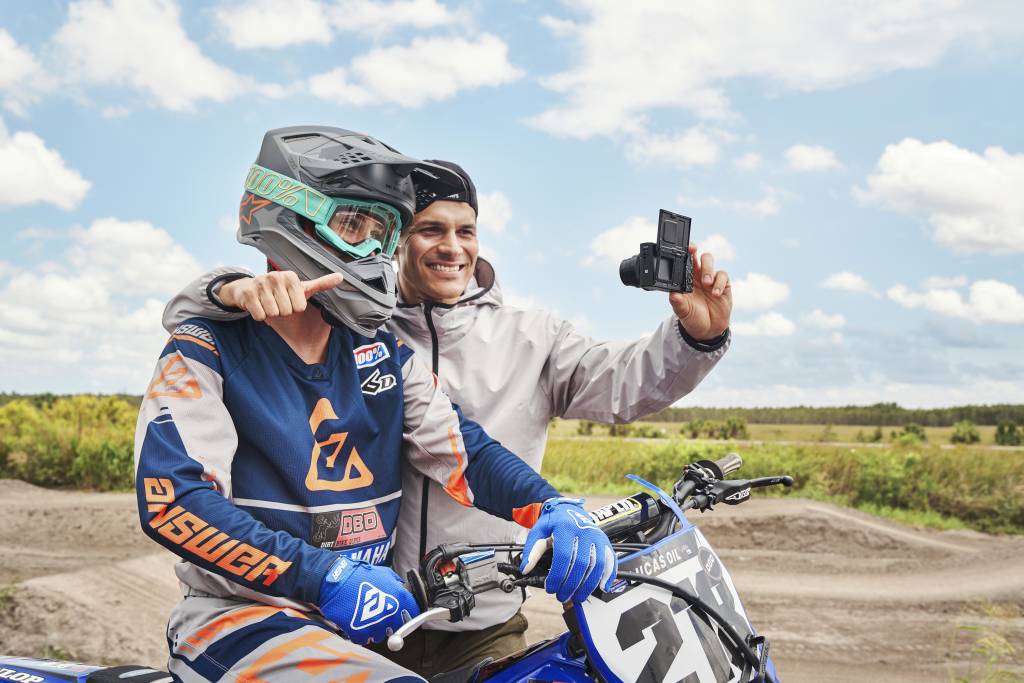
I am sure that an Oskar, alive today, would use a smartphone and there is one available already with a Leica lens which can give you the defocus effect of f0.95. Surely the claptrap about constant ‘improvements’ in electronic goods, including digital cameras, must come to an end someday soon. Most people have switched off to this as it is aimed at their wallets rather than improving the photographic experience. Intelligent people realise that, in most cases, what they have already is good enough. If you do not believe what I am saying, a quick check of the sales figures for digital cameras, and, indeed, smartphones will confirm that the truth has started to sink home. Also on the pure photography front, most photographers realise that a new camera will not make them a better photographer as the various product cycles over the past 10 to 15 years of digital photography have already illustrated. Sony, as a huge conglomerate, has the resources to keep producing new models with more letters or numbers after the title, but surely even Sony will run out of road at some stage. Apart from that, I am sure that this is an excellent little camera. The question is, though, will the sales revenue cover the continuing investment in development?
William
Ah! ‘Enery VIII was the last of his ilk, so maybe the whole edifice will then come crumbling down as William suggests.
He had to get through a few wives as well. The next big thing in cameras will be computational facilities which are a bit underdeveloped so far. Cars are a bit similar these days as drivers have to take a punt on what technology will succeed and become the dominant one. This will inevitably adversely affect sales as people will hold onto their cars in anticipation of some clear direction. Neither the motor industry nor governments are providing a clear road map at this time. I cannot see the country being littered with plug in points anytime soon or that being a solution. A clear roadmap for computational cameras might become essential soon as well. That will boost sales again when it comes.
William
I don’t know that I’ll still be around for holographic cameras, but I’m certainly looking forward to them ..flat photos which you hold in your hand or appear on a screen? ..how quaint!
Surely photos – like the scenes which inspire them – should have depth, should be all around the viewer, should manifest “in-the-round”. Why have we had to make do with just flat photos for all these years? (Stereo photos also come under the heading of ‘flat’ for me.)
If a ‘soundbar’, or a pair of earphones, can provide ‘surround’ sound ..where’s the equivalent for photos ..and why hasn’t it been miniaturised to the size of an RX100M7?
Silence? ..No-one’s got anything to say about this family of excellent little cameras?
The next version, ‘Enery the VIII, just needs “diffusion from depth” (or the opposite of whatever Panasonic call it ..ah; “de-focus from depth”..) like the smartphones which give background blur in Portrait mode, and that’ll be all the camera one ever needs.
The Canon 85mm f1.2 is a wonderful portrait lens – even more wonderful on the focus-from-the-sensor Canon ‘R’, which gives exact and perfect focus EVERY time at f1.2 – so achieving that blur with software at 31.5mm with the teeny 9-72mm lens of the miniature RX100 would really drive a stake into the heart of bulky full-frame SLRs ..and that should be what Leica’s working towards with their proposed 40 new software engineers.
Incidentally, I’d happily relinquish the 200mm end of the RX100’s 9-72mm lens – down to, say, a 150mm-equivalent 54mm – to get a wider 21mm equivalent at the shorter end of the zoom ..say a 6-54mm zoom.
As Mike says above about the present RX100 version VI “..nothing else is as capable while being so compact”. Just add that “software defocus” to emulate the enormous Canon 85mm f1.2, and I’d be in utter heaven. It was, after all, an obscure chap named Oskar Barnack who wanted to produce a SMALL, POCKETABLE general-purpose miniature camera back in 1913 (..but look at the size that Leicas have grown to now!)
If Oskar were alive today, I’m sure he’d jump at the chance to get an RX100MkVII.
I agree, David, a bit disappointing that there had been no comments until now. Your expert assessment says it all. Apart from the wayward diopter adjustment lever, which sits on top of the viewfinder and gets nudged when the EVF is pushed down, I have no complaints about my ‘Enery the Sixth.